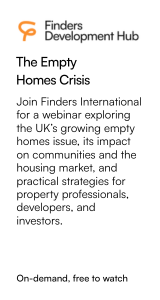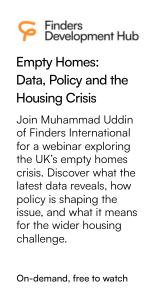Addressing gang-related issues
- Details
Jack Barber and Sarah Salmon set out effective legal responses for social housing providers when it comes to tackling gang-related violence and drug dealing.
Social housing and gang-related activity in the UK
Many social housing providers will be familiar with the wide-ranging issues associated with gang-related violence and drug-dealing in their communities. The national picture has changed in recent years, with county lines drug dealing networks extending far beyond major cities to smaller towns across the country. Some experts are concerned that the mounting cost-of-living crisis and associated economic hardship may lead to a further growth in county lines activity and incidences of cuckooing, even in areas perceived to be relatively safe or affluent.
Legal responses to gang-related activity
Unsurprisingly, membership of a gang is not a clearly defined criminal offence; associations can be fast-changing, fluid, and informal.[1] The general criminal law operates to deter and punish violence and drug-dealing. Following a failed attempt to use section 222 of the Local Government Act to combat gang-violence,[2] statute now defines targeted powers designed to provide more bespoke tools to address gang-related issues.
Policing and Crime Act 2009: Gang injunctions
In particular, the Policing and Crime Act 2009 introduced provisions which allow the police or a local authority to apply to the County Court, High Court or Youth Court for an injunction against an individual to prevent gang-related violence and gang-related drug dealing. Under section 34 of the 2009 Act, a court may grant an injunction against a respondent aged 14 or over if the following conditions are met.
The first condition is that the court is satisfied on the balance of probabilities that the respondent has engaged in or has encouraged or assisted gang-related violence, or gang-related drug-dealing activity: section 34(2).
The second condition is that the court thinks it is necessary to grant the injunction for either or both of the following purposes: (a) to prevent the respondent from engaging in, or encouraging or assisting, gang-related violence or gang-related drug-dealing activity; (b) to protect the respondent from gang-related violence or gang-related drug-dealing activity.
For the purpose of section 34, something is gang-related if it occurs in the course of, or is otherwise related to, the activities of a group that– (a) consists of at least three people, and (b) has one or more characteristics that enable its members to be identified by others as a group: section 34(5).
The importance of multi-agency partnership working
Any effective response to gang-related issues is reliant on strong partnerships between relevant organisations such as the police, local youth offending services, prisons, council education teams, housing associations and other relevant agencies. Collaboration can facilitate greater understanding of the nature of the issues and encourage joined-up tactics to prevent gang activity and protect associates and the wider community.
Housing associations are often on the front line. Officers receiving anti-social behaviour complaints and reports of property damage from drug-dealing or violence may be able to highlight the nature, scale, location and impact of gang-related activity across their communities. Housing providers can proactively engage with the police or local authorities by participating in any multi-agency taskforces created to monitor and respond to gang-related behaviour, and by identifying and monitoring any alarming patterns of behaviour. This can assist in building a robust evidential basis over a sustained period in support of any subsequent application.
Adding value in the statutory consultation process
The 2009 Act provides that applicants for gang injunctions are required to consult any other body or individual that they think it may be appropriate to consult. Often, this may include a respondent’s housing provider. Statutory guidance serves as a practical tool to help local partners apply for and manage gang injunctions effectively and appropriately in accordance with the statutory framework.[3]
In consultation, social housing providers can assist applicants in identifying how gang-related activity affects the provision of social housing, from the need for expensive repairs following firearms discharges at home addresses or police raids; lost time and resources arranging emergency out-of-area moves for gang associates and their families following a “threat to life” warning; the exploitation of tenants via the cuckooing of a property (the process by which a gang targets a vulnerable person to take over their property to use as a base for drug-dealing or other gang-related activity); and, the abandonment of properties by gang members and fleeing victims alike.
Legal challenges and opportunities
The provisions of the 2009 Act raise specific challenges for applicants. Given the looseness of gang affiliations, the requirement to prove that a particular behaviour is “gang-related” (rather than simply anti-social) can be evidentially challenging. It is worth recalling that there are various other statutory powers available to local authorities and police to address the problems associated with gang activity. For example, the conditions to secure an injunction under section 1 of the Anti-social Behaviour, Crime and Policing Act 2014 are less prescriptive, and could be sought in addition to an application under the 2009 Act. Alternatively, if a local authority or police force is not able or willing to apply for an injunction under the 2009 Act, a housing provider can seek an anti-social behaviour injunction on its own initiative. Closure orders under section 80 of the 2014 Act might provide faster relief in relation to problems arising at a specific property. Similarly, multi-agency co-operation is key and any applicant must keep in mind its other statutory duties and obligations by, for example, considering, at an early stage and throughout the process, any Equality Act 2010 or human rights proportionality issues that may arise on any application.
Conclusion
Gang-related activity can quickly become a critical challenge for police forces, local authorities, and social housing providers alike. It is important for these organisations to proactively consider how to meet that challenge, and to ask whether the law might provide an effective solution.
Jack Barber and Sarah Salmon are barristers at Cornerstone Barristers. Along with Kuljit Bhogal and Andrew Lane, they have all recently been instructed on applications under Part 4 of the Policing and Crime Act 2009 for gang injunctions against numerous individual respondents.
[1] Cf. Terrorism Act 2000, section 11(1) and schedule 2, ‘Proscribed Organisations’.
[2] See Birmingham CC v Shafi [2009] 1 WLR 1961.
[3] https://assets.publishing.service.gov.uk/government/uploads/system/uploads/attachment_data/file/526379/Statutory_Guidance_-_Injunctions_to_Prevent_Gang-Related_Violence__web_.pdf

























